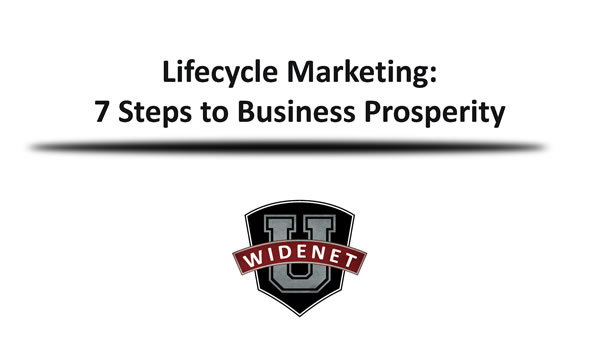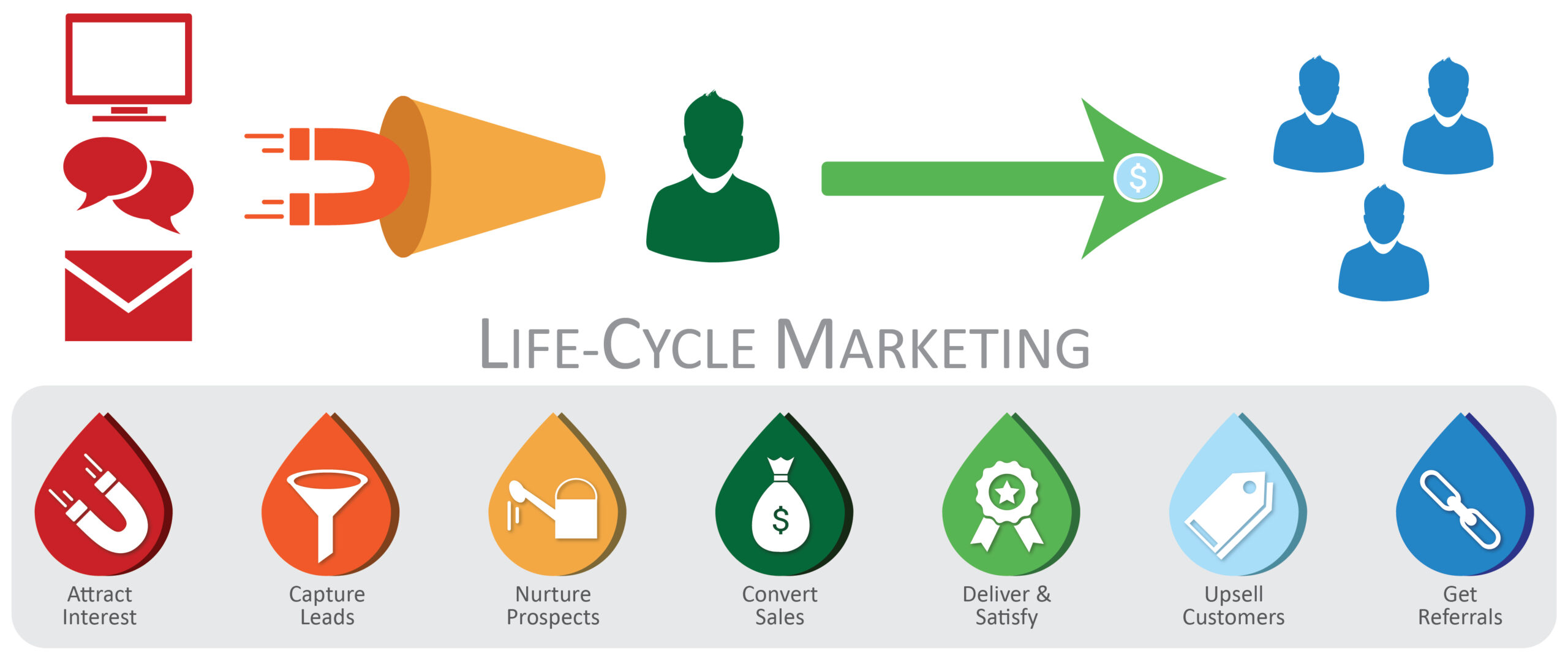In our latest WideNet U class, we discussed how lifecycle marketing and marketing automation can help your business cut costs, gain new customers, and increase profit.
Marketing for the Modern Day
 The art of sales has changed dramatically in the digital age. Traditional marketing methods like print ads and billboards cost too much, produce too little, and simply don’t resonate with the modern consumer. People today expect more than catchy ads and clever slogans. They want a relationship with your business built on trust, relevance, and mutual respect. However, surprisingly few businesses recognize this and continue put their efforts towards survival marketing, or the “old way” that consists of expensive, one-time marketing efforts to gain leads. Often, few leads are converted to prospects, and even fewer into sales. The ones that weren’t sold are tossed aside, and the process starts anew.
The art of sales has changed dramatically in the digital age. Traditional marketing methods like print ads and billboards cost too much, produce too little, and simply don’t resonate with the modern consumer. People today expect more than catchy ads and clever slogans. They want a relationship with your business built on trust, relevance, and mutual respect. However, surprisingly few businesses recognize this and continue put their efforts towards survival marketing, or the “old way” that consists of expensive, one-time marketing efforts to gain leads. Often, few leads are converted to prospects, and even fewer into sales. The ones that weren’t sold are tossed aside, and the process starts anew.
Lifecycle marketing offers a different approach, one that focuses heavily on attracting high value leads and connecting with them on a personal level. This method not only increases the number of conversions but also establishes a positive relationship with the customer who, in return, will continue to patronize your business and refer you to others.
The seven steps are as follows:
- Attract Interest
- Capture Leads
- Nurture Prospects
- Convert Sales
- Deliver and Satisfy
- Upsell Customers
- Get Referrals
Rather than approaching potential customers and hitting them with a sales pitch, attract them to your business. Let them come to you on their own time. The best way to accomplish this is to identify your target audience, personalize your message, and then provide lead magnets on your website or social media page. These help you get the necessary contact information you need while giving something back to the potential customer to pique their interest. For example, on your site, you might offer a coupon, a free trial, or access to special information in exchange for an email address. One you have that contact information, you can start capturing the lead by gathering up as much information as you possibly can. Start a conversation, follow them on Twitter, keep an eye on their Facebook activity, find out who they really are, and then store that information.
Once you’ve gathered enough information, you can begin to nurture the prospect and turn them into a hot lead. When doing so, go in with the mindset that you probably won’t sell anything right off the bat. Instead, focus on building a relationship with the prospect based off the information you’ve gathered. Communicate with them. Be honest and genuine. Educate them about who you are. Dole out the free offers, little samples, and anything else that makes the prospect believe that you care about more than just their money. Marketing guru Gary Vaynerchuck calls this jabbing, and you have to throw plenty of jabs before a right hook. With enough nurturing, converting to sales becomes relatively easy. Because you’ve established a relationship, the prospect feels like they know you personally and can trust you. Your business has essentially made a friend out of the potential customer, and people like to do favors for their friends.
Of course, just because you make a sale doesn’t mean the marketing process is over. Once you deliver, you’ve got to satisfy. If you put in the effort to build a relationship, don’t abandon it once you get the sale. Continue to nurture. Follow up with your customer and WOW them. Doing so affirms their buying decision, builds on the positive perception they already have of your business, and gives them a reason to talk about your business to other people. Even more, it opens the door for the upsell—an opportunity that goes missed far too often. A satisfied customer who’s been wowed by your product and service is going to be more open to other products, services, or add-ons that you have to offer, especially if they’re already in the buying mood.
Lastly, ask for a referral. It’s one of the cheapest ways to increase exposure and grow your business, and you can be guaranteed that a happy customer will tell their friends about their experience with your company. That’s an invaluable testimony.
Automation is Key
If you can’t already tell, implementing the lifecycle marketing method means handling a lot of specific, personalized information and communicating frequently. In order to run an effective campaign, it’s best to utilize some form of marketing automation system.
Marketing automation is a way of storing client information in a digital database and “automating” the tasks that reach out to the prospect or customer—most often through email. Depending on your budget and the system, you can be as broad or as narrow as you need to be. For example, you can set an automation system to remind you to contact a new lead, or you can set up a list of emails to be sent to a particular client at different times after initial contact. You can also use it to target certain products (or updates of certain products) to different clients based on the specific information in your database.
Not only does marketing automation keep your marketing campaign organized, but with the right system, you can do the work of ten people, saving time, effort, and money. There are multiple different systems available such as InfusionSoft, Hubspot, and Marketo, all of which offer free trials so you can decide what works best for your business.
Lifecycle marketing isn’t revolutionary, it’s necessary. The Internet puts the entire world at our fingertips, and because of this, all the power has shifted into the hands of the consumer. This has created the need for a new marketing approach. Despite this, businesses today insist on spending tons of money on one-shot advertising and survival marketing, and it just simply isn’t effective. Lifecycle marketing is an all in one platform. With it, you’ll save money, grow your business, and meet the demands of the modern consumer.



